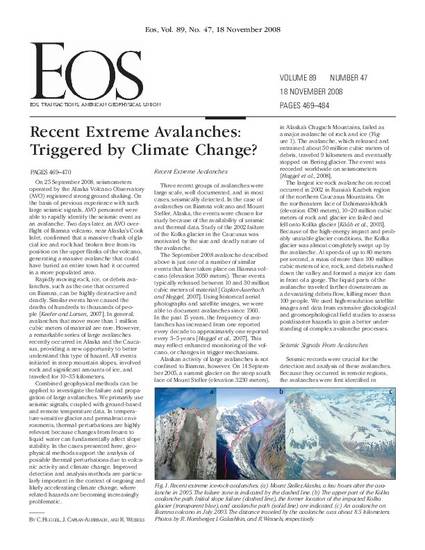
- Debris flow and landslides,
- Glaciology,
- Impacts of global change
On 25 September 2008, seismo meters operated by the Alaska Volcano Observatory (AVO) registered strong ground shaking. On the basis of previous experience with such large seismic signals, AVO personnel were able to rapidly identify the seismic event as an avalanche. Two days later, an AVO overflight of Iliamna volcano, near Alaska's Cook Inlet, confirmed that a massive chunk of glacial ice and rock had broken free from its position on the upper flanks of the volcano, generating a massive avalanche that could have buried an entire town had it occurred in a more populated area.
Rapidly moving rock, ice, or debris avalanches, such as the one that occurred on Iliamna, can be highly destructive and deadly. Similar events have caused the deaths of hundreds to thousands of people [Keefer and Larsen, 2007]. In general, avalanches that move more than 1 million cubic meters of material are rare. However, a remarkable series of large avalanches recently occurred in Alaska and the Caucasus, providing a new opportunity to better understand this type of hazard. All events initiated in steep mountain slopes, involved rock and significant amounts of ice, and traveled for 10–35 kilometers.
Available at: http://works.bepress.com/jacqueline_caplan-auerbach/4/
